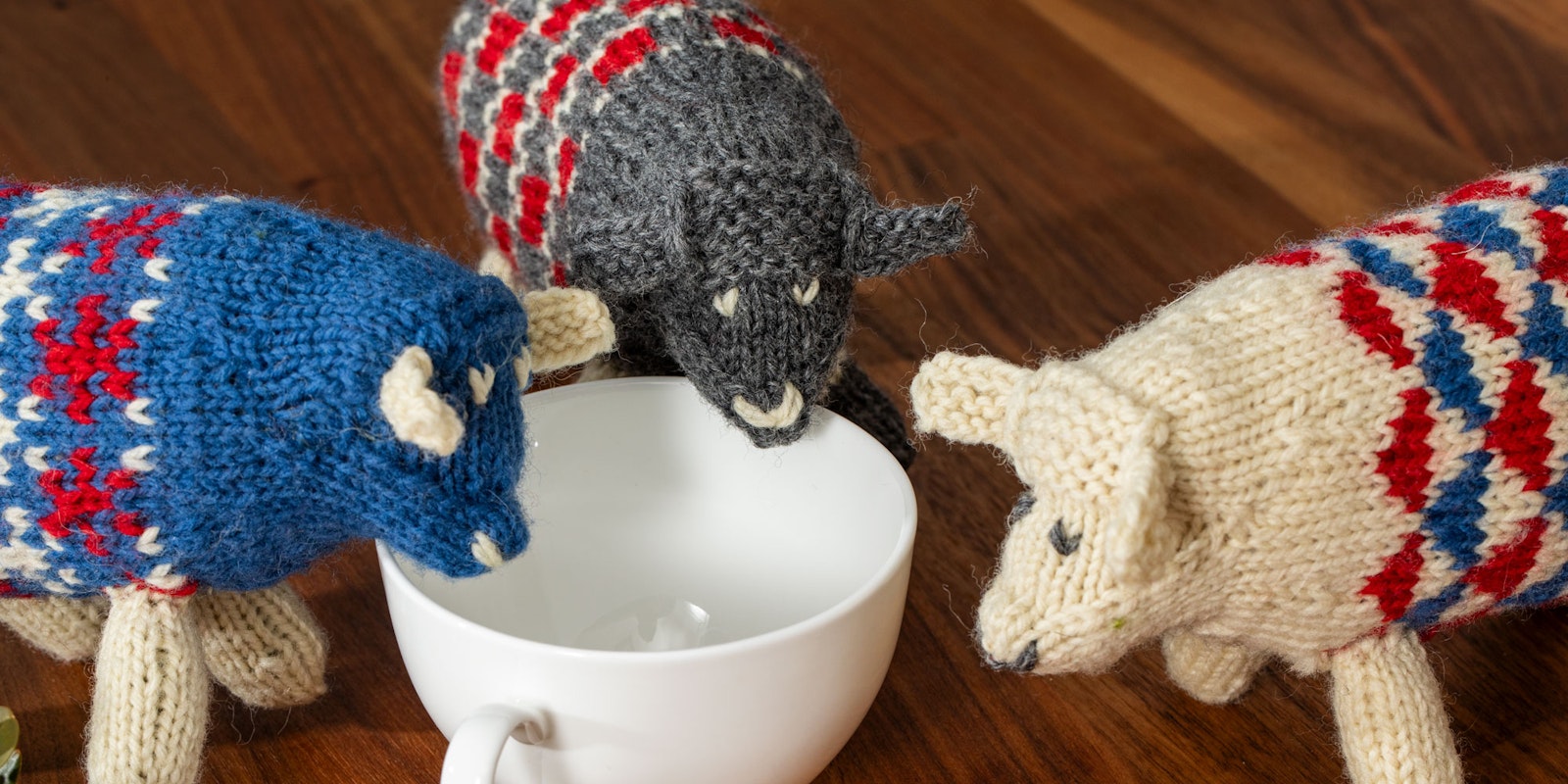Fall may be the most anticipated season for knitters—time to get out your woolies and cuddle up with a new project—but spring has its own joys for wool-lovers: the arrival of new lambs. I’ve been playing lamb videos from Kate Larson’s Border Leicesters and the positively adorable flock at Apple Creek Merinos on repeat. Living squarely in the suburbs, though, lambs of my own are not in the cards. I don’t have a barn or a meadow. What I do have are yarn and needles.
When I worked next to the PieceWork office, one of my officemates had a charming little stuffed knitted animal on her desk. It was a handknitted example of the toys that Anu Raud has at the museum and school in Estonia where she preserves the area’s history and culture. When you think about traditional colorwork motifs and techniques, you might envision fine, complex, even unapproachable textiles, but these little animals are quirky and a little silly. They combine traditional patterns with small, unconventional shapes.
 Accompanying Nancy Bush’s trio of sheep in the top left corner are a colorful menagerie of animals in traditional colorwork patterns and very nontraditional colors from the Heimtali Museum, where they’re part of Anu Raud’s effort to protect Estonian folk culture. Photo of Nancy Bush’s collection of toys from PieceWork November/December 2003.
Accompanying Nancy Bush’s trio of sheep in the top left corner are a colorful menagerie of animals in traditional colorwork patterns and very nontraditional colors from the Heimtali Museum, where they’re part of Anu Raud’s effort to protect Estonian folk culture. Photo of Nancy Bush’s collection of toys from PieceWork November/December 2003.
When I came across Nancy Bush’s pattern for Estonian sheep, it seemed like the perfect spring knitting. I needed a small, fun little project, but I had another motivation. It was time to face my last great knitting fear: stranded colorwork.
Braving the Colorwork Challenge
In 25 years of knitting, I had never successfully worked a stranded-knitting project.
Lace, cables, brioche—no problem. But my favorite kind of floats involve root beer, and with all the puckering, my colorwork is more like lemonade. If I knitted one round loosely, the next round was too tight.
Here’s what I knew about successful colorwork knitting:
- Spread the stitches out on your right needle, which helps leave enough slack in the floats.
- Be consistent with which color yarn you hold in which hand. A phenomenon called color dominance makes one of the yarns look more prominent. Stitch and row by row, it’s not noticeable, but if you change hands partway through, the overall effect is unmistakable.
- Whether you hold one yarn in the right hand and one in the left or both yarns in the left hand, most knitters will have the best tension knitting at least one color Continental-style.
- Use wool—preferably woolen-spun, preferably two-ply, and non-superwash if you can, but definitely wool. The elasticity, memory, and scale of wool fibers combine to make the most forgiving yarn for stranded colorwork.
- The fewer the stitches a yarn needs to float, the easier it is to keep even tension.
Knowing with my head and doing with my hands, though, are very different.
The Right Tool (not the easy tool)
The trio of sheep at the top are specimens #3-5 of my personal colorwork challenge. Sheep #1 was, frankly, a hot mess (but an excellent cat toy). Sheep #2 was better, but the joins between needles caused tight floats that I just couldn’t shake. My preferred knitting style is Magic Loop—with just one long circular needle, even I can’t misplace the needle—but I tried double-pointed needles for Sheep #2, with no improvement. In frustration, I turned to a knitting needle I never expected to use: a 9" bamboo circular, just barely short enough to hold all the stitches of the sheep and just barely long enough to hold in my extra-large hands.
In the end, that very uncomfortable needle made the difference between gappy, puckery sheep and ones that are passable. The small number of stitches spread out over the needles, keeping the floats long and relaxed, and the tiny size kept me from pulling too tightly while knitting. It will take many more seasons of such lambs to knit a flock worthy of standing in the same field as Nancy’s originals, but they have helped me slay my fear of stranded knitting.

